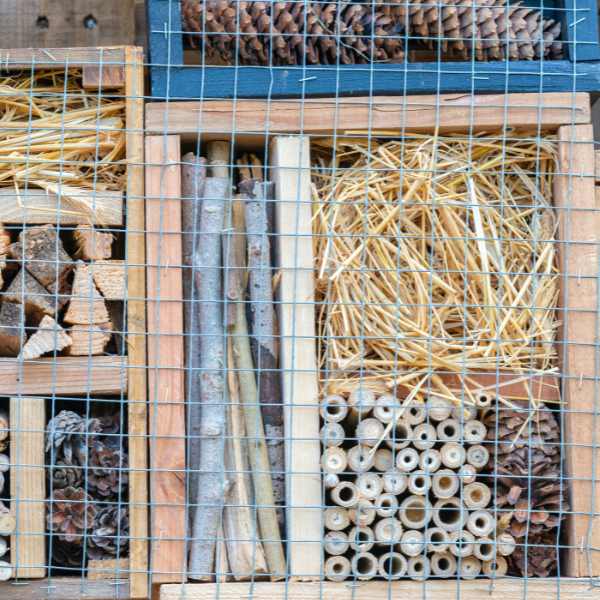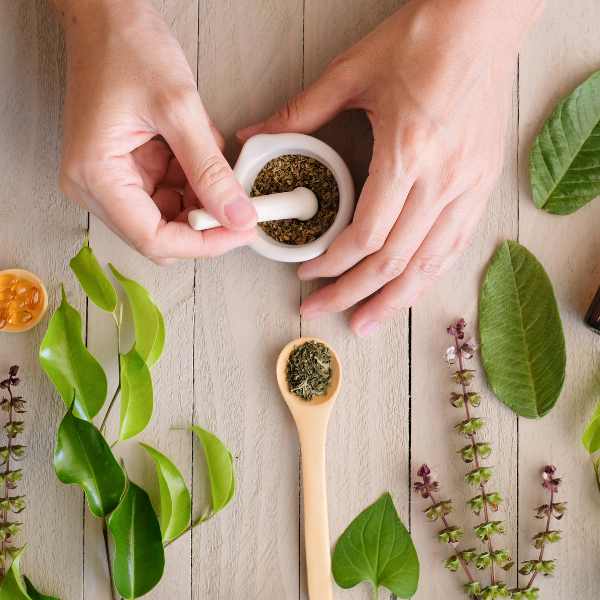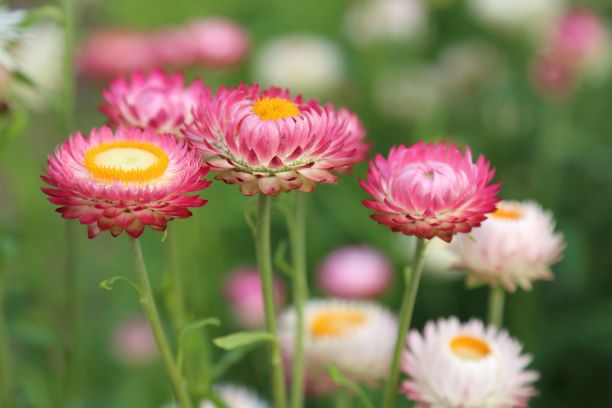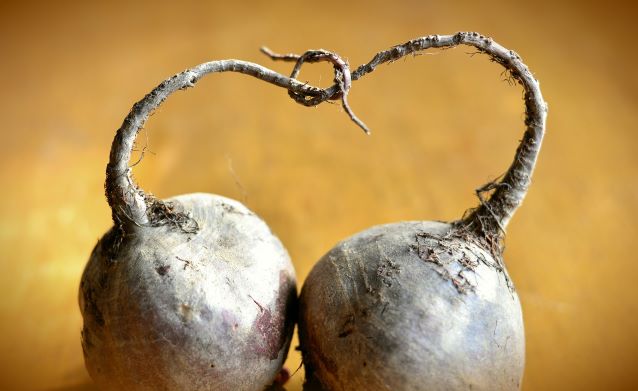Insect Hotel

Mother Nature does a lot to help our fruits and vegetables along by providing an army of beneficial insects to help pollinate our crops and tackle pests. This tiny workforce is invaluable in performing crucial services for your garden.
It wasn’t so long ago that spraying a crop to within an inch of its life whenever the tiniest pest dared to rear its head was the norm. These days we are more encouraged to nurture the insects and bring a natural balance to our gardens..
You can encourage beneficial insects into your garden by providing them with a home. Shrubs and trees provide yearlong shelter, a pile of twigs and leaves can give a temporary home, or you can build them a free hotel.
The good news is it does not cost too much, just a little time and effort. Insects aren’t too fussy, they just need somewhere to bed down and lay their eggs.
Build Your Own
Using salvaged or recycled materials to build the walls and roof of your hotel is the cheapest option – old shelving planks, drinks bottles, pallets, pipes, twigs you name it. The simplest structure is a wooden box open at one end and stuffed with the materials that your insect will love.
Make sure your hotel is watertight, so its residents don’t get a drenching after every downpour. Tiles, offcuts of felt or corrugated roofing are some of the options for weatherproofing.
Room Furnishings
Different types of insects will prefer different room furnishings. If your hotel is big enough you can mix and match, using different materials within each layer or section.
Drilled wood: Solitary bees and wasps are attracted to holes drilled into wood as they offer the perfect place to lay their eggs in peace. Drill holes of different sizes, between 5mm and 10mm in diameter to offer spaces for different species.
Rotting logs: Perfect for wood-boring beetles whose larvae will feast on the decaying wood. Place at the base of your hotel so the logs stay nice and damp and mix with other decaying plant matter.
This will attract centipedes, who devour slugs, and millipedes, who will provide a welcome source of food for birds. This is also a great spot for garden spiders.
Twigs, sticks and stems: Bundled together, sticks and twigs of different sizes offer welcome lodgings for beetles. These beetles chomp away at many of the pests that hinder our crops, including aphids and carrot root fly larvae. You’ll also be offering a vacancy to ladybirds, who hoover up aphids and nuisance insects such as mites.
Hoverflies will also be attracted to this type of material. Hoverflies are both pollinator and pest patroller – the larvae carry an insatiable appetite for aphids while the adults feed on nectar as they pollinate flowers.
Bamboo canes: Hollow stems such as bamboo canes provide another hidey hole for solitary bees, who will lay their eggs then seal up the hole using mud or leaf litter.
Straw, dried grass or rolled up cardboard: Perfect materials for a lacewing hangout. Lacewings are truly the gardener’s best friend, devouring aphids, caterpillars, and mites. Place your straw or cardboard inside an old open-ended glass bottle to prevent it turning soggy.
Location, Location, Location
For your hotel to become the destination of choice it must be in prime position. Choose a sheltered area of the garden away from the prevailing wind.
Most insects prefer slightly damp conditions, but solitary bees demand a sunniest aspect in winter to help them get out and about on cold days. Your hotel will become fully occupied quicker if it is located close to an existing insect hotspot: a hedge, nectar-rich flowers or a pond, for example.
Poolside
All good hotels need a pool! Fill a shallow container with stones, glass pebbles or marbles and water and set it out near your hotel. Whether it’s a frisbee, a plate, a casserole dish, or a flat bowl, your watering station will make a significant difference for bee colonies in your local area.





